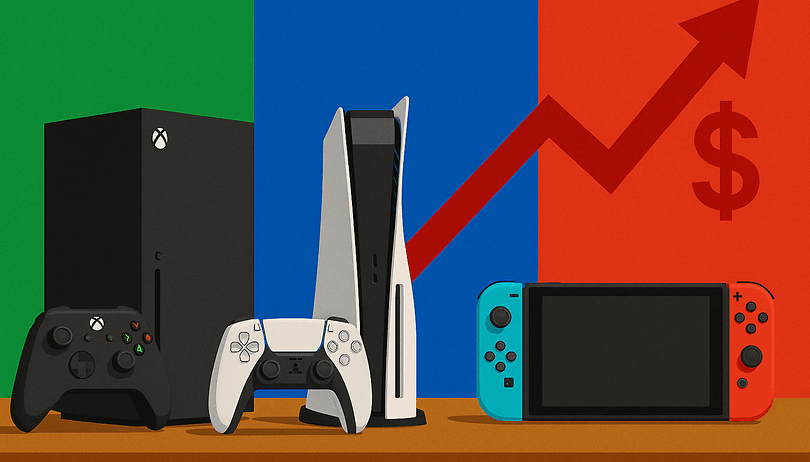How Much Will it Cost to Play on PS5, Xbox Series X or Switch 2 With All These Price Hikes?


After Sony and Nintendo, Microsoft recently completed a festival of price increases for video game consoles. On average, an Xbox Series console will be $100 more expensive by 2025. The Nintendo Switch 2, U.S. tariffs, the infamous "economic situation"... there's no shortage of arguments to justify this race to your wallet. So let's take stock: how much more will you have to spend on console gaming in 2025?
Nintendo opened the floodgates on April 3 with the Nintendo Switch 2. Its new console retails for $449, or $150 more than the Switch, the first of its kind in 2017.
Sony Europe followed suit on April 13, announcing a 50 euro increase in the price of the basic PS5 digital version (without a disc drive). Fortunately, the Japanese giant showed mercy by not raising the price of its other consoles, such as the PS5 Pro, which sells for almost 800 euros. The US branch of the Japanese giant so far has kept quiet about price hikes in North America.
More recently, on May 1, Microsoft also gave in to the trend, announcing a $80~100 price hike for most of its Xbox catalog. Even "first-party" games, exclusive to Xbox or developed by Microsoft-owned studios, will become more expensive by the end of 2025. They could rise to $80, as will certain Nintendo Switch 2 games.
| Old price | New price | Increase | |
|---|---|---|---|
| Xbox Series X |
|
|
$100~130 |
| Xbox Series S |
|
|
$80 |
| PS5 Digital Edition | $450 | $0 (so far) | |
| Nintendo Switch 1/2 | $300 (price of the 1st Switch in 2017) |
$450 | $150 |
Making video games, a financial abyss, it seems
Obviously, the case of the Nintendo Switch 2 is a little different. The former price shown in the table above is that of the first Switch. The price difference is therefore not entirely comparable. But it does reflect an almost unanimous desire on the part of manufacturers to increase their margins. And it's not just because of "market conditions", as the manufacturers put it.
This goes beyond the context of US tariffs, for example. Microsoft clearly mentioned "development costs" to justify its change in pricing policy. The economic non-viability of video games, especially the big mainstream games known as "AAA", has become a recurring theme in recent years.
For some, this fixed idea came to the fore when the astronomical budgets of AAA games were made public. One example is the Sony documents leaked in 2023. They had been submitted to the courts as part of Microsoft's planned acquisition of Activision Blizzard. They revealed, for example, that Horizon Forbidden West cost $212 million to make, while The Last of Us Part 2 had a budget of $220 million. And these dizzying figures did not include marketing expenses.
Another striking example is the explosion in the budget for Call of Duty titles. Again, this is a leak of legal documents according to which the development of a Call of Duty went from $450 million to $700 million between 2015 and 2020. Add to this the game's development, which stretches over several years before any return on investment is seen, and it's easy to understand this argument of non-viability.
But this supposed crisis in the AAA games business model alone cannot justify the rise in hardware prices. Hardware that is well beyond the first half of its lifecycle, especially as we question the relevance of upgrading to the next generation of Playstation and Xbox consoles. But that's far too broad a theme to be dealt with in this article, which is longer than it needs to be.
In any case, I'm glad I bought my Xbox Series X at the end of 2023. The 50 euros I've saved compared to the current price will be enough to buy GTA VI for 100 euros next year. What are you going to do with all that dough?
Source: Xbox













